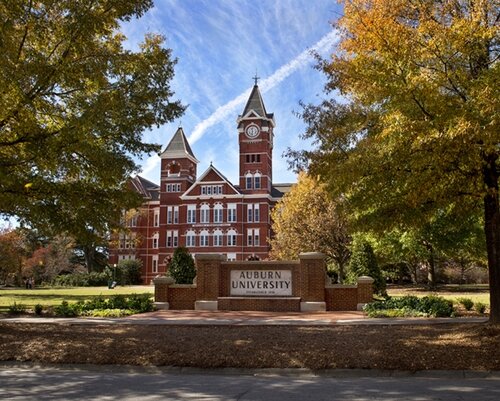Auburn University: Auburn University graduate students awarded funding through federal Joint Fire Science Program
Two Auburn University graduate students in the College of Forestry, Wildlife and Environment’s Forest and Fire Ecology Lab have been selected to receive grant funding through the Joint Fire Science Program of the U.S. Department of the Interior and the U.S. Forest Service.
The program funds innovation in graduate research and is designated for students seeking research opportunities in forest and fire ecology.
Master’s degree student Eric Brubaker’s proposal, “Impacts of restoring fire to coastal pine forests on seed viability of invasive Chinese tallow,” will receive $24,944.
Invasive species such as the Chinese tallow tree threaten the health of diverse ecosystems. The research is significant because there is currently no information on the role of fire on tallow seed viability, Brubaker says.
His proposed research will build on his existing thesis by adding an experimental component to test hypotheses about how increasing tallow leaf litter contribution to the fuel bed affects tallow seed viability and germination rates.
Brubaker hopes to achieve a broader understanding of the mechanisms that tallow tree spreads, as well as explore the effect of tallow litter contribution to the fuel bed on tallow seed viability.
“Tallow invades by seed, and prescribed fire is commonly used in these systems to maintain or restore desired forest composition and structure,” Brubaker said. “Thus, understanding whether fire impacts tallow invasiveness would address a major knowledge gap in the literature surrounding the use of prescribed fire in biologically invaded ecosystems.”
Doctoral student Arthur Lamounier Moura’s proposal, “Linking understory community functional traits and fire behavior in two fire-dependent forest types,” was awarded $19,953.
With this funding, Lamounier Moura will investigate the influence of the herbaceous vegetation on the flammability of fire-prone forests.
Lamounier Moura hopes the study will improve the knowledge of fire management in fire-prone forests by taking into consideration the influences of the understory vegetation on flammability and bridge the knowledge gap between fire behavior and understory community.
“The research can be a useful source of recommendations for land managers and foresters in the assessment of stand fuels, target species for restoration and defining burn objectives,” said the students’ major advisor, Heather Alexander, associate professor in the College of Forestry, Wildlife and Environment.
Lamounier Moura plans to locate different understory communities in fire-dependent forests across the southeastern U.S. and study the relationship between properties of their plant communities growing in the understory and the characteristics of experimental burns.
“We will integrate real-time data logging and thermal imaging to assess the fire intensity and severity in our study sites,” Lamounier Moura said.

